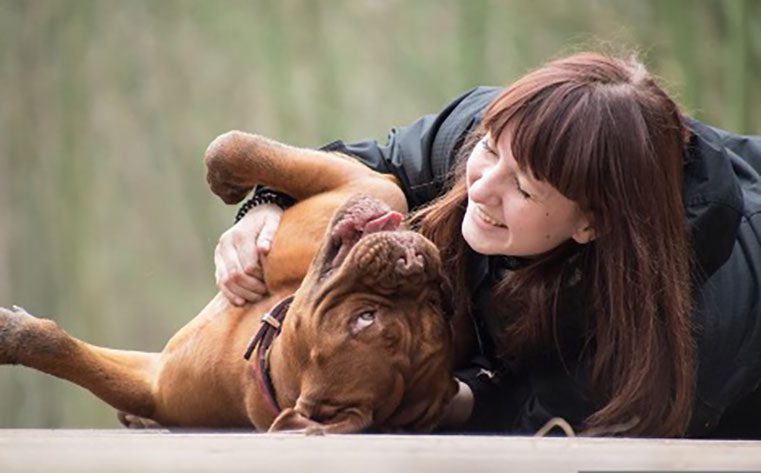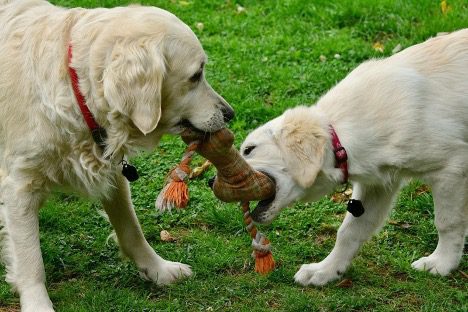Are you wondering why you should encourage your dog to play more? Enjoyment is just the tip of the iceberg. Playtime has several health perks, including weight loss, mental stimulation and stress relief. Additionally, dogs that play are less likely to involve themselves in destructive behaviors, such as chewing, biting or barking. If you want to get your dog to engage in playtime more often, the following tips may help.
Teach Your Dog To Play
Some dogs are less playful than others. This can be due to various factors, such as growing up in a shelter or dealing with high anxiety. Regardless of your pup’s reason for not wanting to play, you can teach your pooch the ropes.
If your dog doesn’t understand simple games such as fetch, you can show your pup how it’s done by tossing a tennis ball and going after it yourself. Get excited about the game to show your pooch that playtime is fun. Start rolling the ball past your pup to encourage them to participate. Cheer for your dog if they grab the ball.
Try switching up toys or moving to a different environment as your pup gets more comfortable. For example, if you began training indoors, consider creating a more exciting experience by setting up a dog barrier fence and playing in your yard.
Utilize Toys Your Dog Likes

Alexas Fotos on Pixabay
You can’t expect your dog to play if they’re afraid of squeaky toys or uninterested in old ones. Instead, you should figure out what toys your dog likes. Try placing different options around the house to see what most interests them. For instance, if you find that your pup is willing to play tug-of-war with a rope or plush toys, you may be able to encourage more play with similar options.
Remember that dogs get bored with the same old toys which can ultimately lead to a decrease in play. Instead of purchasing new toys, try utilizing a system where you rotate your dog’s favorite toys weekly or monthly to ensure your pup doesn’t lose interest. Each toy switch will be an exciting change for your dog.
Use Positive Reinforcement
When you teach your pup how to play, make sure you reward their good behavior, as doing so will boost your dog’s confidence. Giving your pup a treat, telling them “good dog,” or petting them after they fetch a toy or when your dog starts to play alone, will help your dog associate playing with rewards. This connection will ultimately encourage your pup to play more.
Best of all, the more you engage in interactive play with your pooch, the stronger your bond will grow. Before you know it, your pup will bring you a toy and expect you to join in the fun!
Interact With Your Dog When They’re Energized
Rather than forcing your dog to play when they’re tired or not in the mood, pick a time when your pup is full of energy, such as when you come home and your dog is happy to see you. Doing so will make the experience more pleasant for your pooch.
If you rouse your dog from a nap or before bedtime for a play session, you could interfere with their sleep schedule. Also, you may unintentionally cause your pooch to view playtime as a negative experience.
Engage In One-On-One Play

Rebeccas Pictures on Pixabay
Every dog is unique. Some dogs prefer toys, whereas others like playing with their pet parents. If your pup isn’t generally interested in toys, try some one-on-one games, such as tag or play wrestling. You may find that these game types are just what your pup loves the best.
Keep in mind that more complex games such as hide-and-seek may require extra training. If you can teach your dog the commands “stay” and “find me,” you’ll be able to set your pup up for success.
Additionally, as your pup gets better at this intricate game, you can make it more challenging by choosing sneakier hiding places and hiding further away. Your dog will love using their senses to find you!
The Result: One Playful Pup
Helping your dog become more playful doesn’t have to be complicated. The process should be fun and exciting. However, you must be patient, consistent and persistent to ensure your pup successfully understands the perks associated with playtime.
Bear in mind that there is no set schedule your dog has to meet. Some dogs learn faster than others. Instead of pushing your pup to play, enjoy the quality time together and go as slowly as your pooch needs. Eventually, your dog will be ready for regular play dates with you.


